Table of Contents
I’ve used and reviewed the 2025 Razer Blade 16, the 2025 Asus ROG Zephyrus G16, and the 2025 Asus ProArt P16 over the last weeks, and I’ve gathered my thoughts on these three in this article, a comparison to help you choose between these three lineups.
These are all direct competitors and arguably the best options available today in the thin-and-light high-performance segment of premium notebooks meant for creators and professional users. They can handle daily chores, workloads, and games, and all offer premium chassis designs, versatile OLED displays, and all sorts of modern specs, all the way up to configurations with an Nvidia Blackwell RTX 5090.
The ProArt P16 is a slightly lighter and thinner variation of the Zephyrus G16, targeted at creators and perhaps not as compelling as a gaming machine. It comes with a more minimalist design, a 4K OLED touchscreen, and powerful specs as well, so is a proper alternative to the other two in this latest iteration.
Update: There are two variants of the ProArt P16, one that’s a little lighter, comes with a 4K 60 Hz screen and specs up to an RTX 5070, and a newer model launched late-2025 that’s about 100 grams heavier, comes with a 4K 120Hz Tandem OLED display, and can be specced up to an RTX 5090. The initial article referred to the prior variant, but I’ve updated it to include the latest P16 iteration as well.
We’ll go through the design particularities of these platforms, their ergonomics and usability, and then focus on their performance capabilities, cooling, and battery life.
But first, the specs sheets, with links to our detailed reviews.
Specs sheets – 2025 Razer Blade 16, Asus ROG Zephyrus G16, Asus ProArt P16
| Razer Blade 16 | ASUS ROG Zephyrus G16 GU605C | ASUS ProArt H7606W | |
| Display | 16-inch, 16:10, glossy, non-touch, OLED QHD+ 2560 x 1600 px , 240 Hz VRR 0.2ms, 400 nits SDR, 100% DCI-P3 colors |
16-inch, 16:10, glossy, non-touch, OLED QHD+ 2560 x 1600 px , 240 Hz VRR 0.2ms, 400 nits SDR, 100% DCI-P3 colors |
16-inch, 16:10, glossy, touch, OLED 4K+ 3840 x 2400 px , 120 Hz VRR 0.2ms, 700 nits SDR, 1500 nits HDR, 100% DCI-P3 colors |
| Processor | AMD Strix Point, Ryzen AI 9 HX 370, 12C/24T, up to 5.1 GHz on the 5090 model Ryzen AI 9 365, 10C/20T, up to 5.0 GHz on the 5060-5080 versions |
Intel Arrow Lake H, Core Ultra 9 285H, 16C/16T |
AMD Strix Point, Ryzen AI 9 HX 370, 12C/24T, up to 5.1 GHz on all versions |
| Video | Radeon 890M + up to Nvidia GeForce RTX 5090 24GB (up to 155W with Dyn Boost) with MUX, Advanced Optimus, GSync |
Arc + up to Nvidia GeForce RTX 5090 24GB (up to 120W with Dyn Boost) with MUX, Advanced Optimus, GSync |
Radeon 890M + Nvidia GeForce RTX 5090 24GB (up to 120W with Dyn Boost) without MUX, Advanced Optimus, GSync |
| Memory | up to 64 GB LPDDR5x-8000 (onboard) | up to 64 GB LPDDR5x-7467 (onboard) | up to 64 GB LPDDR5x-8000 (onboard) |
| Storage | 2x M.2 PCI 4.0 x4 slots | 2x M.2 PCI 4.0 x4 slots | 2x M.2 PCI 4.0 x4 slots |
| Connectivity | WiFi 7 2×2 with Bluetooth 5.4 | WiFi 7 2×2 with Bluetooth 5.4 | WiFi 7 2×2 with Bluetooth 5.4 |
| Ports | left: DC-in, 2x USB-A 3.2, 1x USB-C 4.0, audio jack right: Lock, 1x USB-A 3.2, 1x USB-C 4.0, UHS-II SD card reader |
left: DC-in, HDMI 2.1 FRL, 1x USB-C Thunderbolt 4.0, 1x USB-A 3.2, audio jack right: 1x USB-A 3.2, 1x USB-C gen2 (with data, DP, PD), UHS-II SD card reader |
left: DC-in, HDMI 2.1 FRL, 1x USB-C 4.0, 1x USB-A 3.2, audio jack right: 1x USB-A 3.2, 1x USB-C gen2 (with data, DP, PD), SD Express 7.0 card reader |
| Battery | 90 Wh, 330 W power adapter, USB-C charging up to 100W |
90 Wh, 240 W power adapter, USB-C charging up to 100W |
90 Wh, 200 W power adapter, USB-C charging up to 100W |
| Size | 355 mm or 13.98” (w) x 251 mm or 9.86 (d) x 17.4 mm or – .69″ (h) | 354 mm or 13.96” (w) x 246 mm or 9.68 (d) x from 14.9 or .59” (h) | 354 mm or 13.96” (w) x 246 mm or 9.68 (d) x 14.9 – 17.3 mm or .59” – .68″ (h) |
| Weight | 2.1 kg (4.65 lbs), .85 kg (1.85 lbs) for the 330W power brick and cables |
2.1 kg (4.65 lbs), .72 kg (1.58 lbs) for the 240W power brick and cables |
1.95 kg (4.3 lbs) – up to , .76 kg (1.67 lbs) for the 240W power brick and cables |
| Extras | clamshell format with 135-degree hinge, CNC metal chassis, black design with green Razer logo on the lid, per-key RGB keyboard, glass touchpad, 6x speakers, 2MPx camera with IR |
clamshell format with 130-degree hinge, premium design and lightbar on the lid, minimalist single-zone RGB keyboard, glass touchpad, 6x speakers – 10W, 2MPx webcam with IR, available in silver (Platinum White) or gray (Eclipse Gray) variants |
clamshell format with 130-degree hinge, clean minimalist design without lightbar, white backlit keyboard, 1.7 mm travel, glass touchpad with DialPad zone, vapor chamber cooling on 5070Ti-5090 versions 6x speakers – 10W, 2MPx webcam with IR, available in Nano Black |
Design and ergonomics
All these are all-metal premium notebooks. The Blade 16 and the Zephyrus G16 are about the same size and weight at around 2.1 kilos, while the ProArt P16 is a little thinner and lighter, at 1.95 kilos. And that’s despite the fact that all are mid-power implementations with vapor-chamber cooling modules.
Perhaps surprisingly, the Blade feels the least solid of the three, with some flex in the keyboard deck and in the middle of the lid. But it’s not a deal breaker by any means.
Aesthetically, the ProArt P16 is by far my favorite design, with a minimalist black theme, muted branding, and no annoying lights. The Blade is just as nice on the inside, but gets that obnoxious green Razer logo on the lid, which is the reason quite a few Blade owners put a decal on their units.
The Zephyrus comes in two color options, a silver/white one and a gray variant – I prefer the latter, as it does a better job integrating that useless lightbar on the lid. The white Zephyrus, however, is by far the most care-free design, as all the others show smudges and finger oil on the metal pieces and on the keycaps.
Ergonomically, all these check most of the right boxes, but the Blade comes a little in front with stronger screen hinges, a clean interior design, friendly edges, no annoying lights, good grip, good IO placement. The screen back angle is limited at only around 130 degrees, identical to the other two. The hinges on the Asus units are a little weaker, and the rubber feet are lower profile and leave less space underneath the chassis for ventilation.
As for the IO, there’s one more USB-A and a lock on the Blade 16, but otherwise, they all offer USB-A and USB-C ports, a full HDMI, an audio jack, and an SD card reader.
Worth mentioning that all implement a USB-C port on either side, handy for charging and connecting peripherals. The USB-Cs on the Blade are, however, both hooked into the AMD iGPU, while the USB-Cs on the Asus units are hooked into the Nvidia dGPU, with advantages and cons for either approach. The HDMIs are hooked into the Nvidia chips on all three devices.
Down below I’ve illustrated the ports on the Blade 16 – bottom- and the ProArt P16 – top (they’re identical on the Zephyrus G16).
I must mention the power plugs on these devices, with the wobbly perpendicular design on the Asus models and the firmer 90-degree version on the Blade, the latter being far superior and better at routing the cable towards the back of the laptop.
With that out of the way, I’ll leave you with some images of these devices.
First, the Asus ProArt P16 (left) and the Razer Blade 16 (right).
And then the Asus ROG Zephyrus G16 in the white variant (left) next to the Razer Blade 16 (right).
And then the ProArt P16 (left) next ot the Zephyrus G16 in the same white variant (right).
I didn’t have the gray variant of the Zephyrus G16 around for these shootouts, but here are some images of the white and the gray Zephyrus G16 variants.
Keyboard and touchpad
All these laptops get minimalist keyboard layouts without a NumPad, and large glass touchpads.
There are four extra customizable keys on the top left on the Zephyrus models, and an extra column of customizable keys on the very right side on the Blade 16, while the ProArt P16 doesn’t offer any extras.
These are all good typers, but out of the three, I’d rank the Zephyrus first, the ProArt a very close second, and the Blade third. The feedback is just shallower and clickier on the Blade, and I’m not a big fan of the flat keycaps either, so my experience just wasn’t on par with the other two.
When it comes to lighting, however, the Blade 16 is by far the better implementation, with per-key RGB control, bright LEDs without any light bleeding around and underneath the keycaps, and all sorts of possible customizations. The ProArt P16, in comparison, gets just white LEDs, and the Zephyrus gets single-zone RGB lights, with limited settings and some light bleed.
The touchpads are giant on all these laptops. I’ve seen people complain about palm rejection of the Blade, but I haven’t noticed anything particularly wrong with it. I’ve also seen some Reddit threads reporting stuttering and freezes caused by the Synapse software, but again, not something I ran into on my unit. But definitely something to keep in mind and test out if you decide to go for a Blade.
The touchpad experience on the Asus models is more consistent, without reported bugs or issues.
What bothers me about the touchpads on the Asus laptops is the way they come so close to the front lip of the chassis, allowing for ghost touches and fake swipes when using these devices on the lap or on the go. That’s less of an issue on the Blade, due to that bevel under the touchpad on the front lip.
I do have to mention the DialPad area on the ProArt touchpad, a particularity of the series, with software integration in some creator apps such as the Adobe suite. Asus make a big deal about it, and while I gave it a try in various implementations, I still consider it a gimmick that I wouldn’t actually use in real life. At least it doesn’t affect the general touchpad experience in any negative way, so I can just ignore it.
As far a biometrics go, there are IR cameras with Hello support on all these devices, and no fingerprint sensors.
OLED displays
The Razer Blade 16 and the Asus Zephyrus G16 bundle the same OLED glossy non-touch display, a 2.5K panel with 240 Hz refresh, 400-nits of SDR brightness, and 100% DCI-P3 color coverage.
This is a versatile multi-purpose panel, beautiful for general use, multimedia streaming, and content creation, but also excellent for gaming. There’s also a MUX, Advanced Optimus, and GSync support on the Blade and Zephyrus models.
The ProArt P16, on the other hand, gets a touch OLED implementation with a 4K panel. The P16 variants available up to the Fall of 2025 implemented a regular 4K 60Hz panel, but the latest generation implements an updated Tandem OLED panel with 4K resolution, 120Hz refresh and VRR, and much higher brightness: 700 nits sustained, 1500+ nits peak HDR. These specs make the Tandem OLED panel awesome for everyday use, multimedia and content creation. However, there’s no MUX and no GSync on the ProArt, which impact its gaming prowess to some extent.
The culprits of these OLEDs are flickering at lower brightness levels, potential burn-in if not used properly, and highly reflective finishes that make them difficult to use in bright light environments.
Furthermore, the touch OLED on the ProArt experiences an amount of grain/muddiness visible on light backgrounds at lower brightness levels.
The official ProArt P16 specs list also mentions a 3K 120Hz panel option for some configurations, but I haven’t seen that in actual retail units so far.
Hardware and performance
Here are the hardware specifics of these three lineups:
- Razer Blade 16: AMD Strix Point hardware (Ryzen AI 9 365 or 9 HX 370) with RTX 5060-5090 155W TGP graphics, up to 64 GB of LPDDR5x-8000 onboard RAM;
- Asus ROG Zephyrus G16: Intel Arrow Lake H hardware (Core Ultra 9 285H) with RTX 5050-5090 120W TGP graphics, up to 64 GB of LPDDR5x-7467 onboard RAM;
- Asus ProArt P16 (early 2025): AMD Strix Point hardware (Ryzen AI 9 HX 370) with RTX 5060-5070 100W TGP graphics, up to 64 GB of LPDDR5x-7500 onboard RAM.
- Asus ProArt P16 (latest refresh): AMD Strix Point hardware (Ryzen AI 9 HX 370) with RTX 5070Ti-5090 130W TGP graphics, up to 64 GB of LPDDR5x-7500 onboard RAM.
So the Blade and the ProArt are built on AMD Strix Point Ryzen AI 9 hardware, while the Zephyrus G16 is an Intel platform in this 2025 iteration.
However, with the Blade you’re only getting a top Ryzen AI 9 HX 370 processor with the 5090 configuration, while the others are limited to a Ryzen AI 9 365 processor. There are also several other annoying configuration limitations with the Blade, designed to drive potential buyers into more expensive configurations. For the most part, though, the Blade is the most configurable option of the three.
On the GPU side, the Blade is by far the more powerful implementation, with the ability to spec up to a 5090 24GB GPU at up to 155W TGP with Dynamic Boost. You can also spec a 5090 24GB on the Zephyrus G16, but at up to 120W TGP, and a similar RTX 5090 120-130W on the latest iteration of the ProArt P16. The previous P16 variants were only available with up to a 5070 8GB 100W.
The RAM is soldered on all these devices, and all offer 2x SSD PCIe gen4 slots. The Blade is the easiest to open and upgrade. Here’s the internal design of all three (Blade, Zephyrus, ProArt, left to right).
As far as software goes, while the Asus control software (Armoury Crate on the Zephyrus, ProArt Creator Hub on the ProArt) isn’t perfect, it’s nowhere near as buggy as Razer’s Synapse. Plus, there’s always the option to switch to the lightweight third-party GHelper app on Asus devices.
At the same time, the Blade offers the highest power settings here. Here’s what to expect of these three on their top profiles:
- Blade 16 on Performance mode: 170W crossload power, with up to 20W TDP + 155W TGP, 50 dBa noise levels;
- Zephyrus G16 on Turbo mode: 140W crossload power, with up to 20W TDP + 120W TGP, 48 dBa noise levels;
- ProArt P16 (pre-Fall 2025 variant) on Performance mode: 120W crossload power, with up to 20W TDP + 100W TGP, 45 dBa noise levels;
- ProArt P16 (Fall 2025 refresh) on Performance mode: 140W crossload power, with up to 20W TDP + 120W TGP, 48 dBa noise levels.
The difference is in GPU power allocation and noise levels. You also get Silent modes on all these laptops, but while the Asus laptops target a 35 dBA noise floor for those, the Blade is nowhere near as quiet at 42 dBA. It does perform much faster, of course, but that means you need to tweak things manually to actually get a usable quiet profile.
With that out of the way, let’s discuss performance.
Here are the results on the Cinebench R15 loop benchmark, which tests CPU capabilities in sustained loads. I’ve included the top-end and lower-end profiles for all the devices, with more details available in the reviews.
At the very top, the three are neck in neck, but the Blade allocates less power to the CPU and runs the coolest/quietest.
At the bottom, all laptops run quietly at sub-35 dBA in this test, with a slight performance advantage for the ProArt, which runs at higher power than the Blade at this level. The AMD hardware scales better than the Intel CPU at lower power.
Next, some benchmark results on the top-level profiles on these three platforms.
| Ryzen AI 9 370 RTX 5090 155W Razer Blade 16 |
Core Ultra 9 285H RTX 5090 120W Asus Zephyrus G16 |
Core Ultra 9 285H RTX 5070Ti 115W Asus Zephyrus G16 |
Ryzen AI 9 370 RTX 5090 120W Asus ProArt P16 |
Ryzen AI 9 370 RTX 5070 100W Asus ProArt P16 |
|
| 3DMark – Fire Strike | 38507 (G – 55886, P – 30875, C – 13003) | 36060 (G – 42997, P– 35915, C – ) | 32775 (G – 37477, P – 35130, C – 16055) | 31924 (G – 39636, P – 32102, C – 12938) | 27251 (G – 30975, P – 32998, C – 12600) |
| 3DMark – Port Royal | 15519 | 12613 | 9290 | 12492 | 8460 |
| 3DMark – Time Spy | 18761 (Graphics – 22359, CPU – 9813) | 17861 (Graphics – 19107, CPU – 13042) | 13808 (Graphics – 13968, CPU – 12971) | 16163 (Graphics – 18023, CPU – 10201) | 12487 (Graphics – 13015, CPU – 10156) |
| Uniengine Superposition – 1080p Extreme | 13660 | 11510 | 8121 | 12064 | 7951 |
| CineBench R23 (loop) | 23693 cb – multi core, 2040 cb – single core |
20814 cb – multi core, 2114 cb – single core |
20710 cb – multi core, 2107 cb – single core |
23332 cb – multi core, 2007 cb – single core |
23269 cb – multi core, 1991 cb – single core |
| Blender 4, Classroom scene – CPU Compute | 4m 42s | 5m 05s | 5m 09s | 4m 23s | 4m 28s |
| Blender 4, Classroom scene – GPU Compute | 17.81s (CUDA), 10.53s (Optix) | – | 28.54s (CUDA), 16.22s (Optix) | 19.58s (CUDA), 11.78s (Optix) | 33.29s (CUDA), 17.17s (Optix) |
| SPECviewperf 2020 – 3DSMax: | 214.89 | 197.21 | 164.06 | 205.25 | 120.96 |
| SPECviewperf 2020 – Catia: | 113.90 | 93.75 | 80.92 | 100.64 | 73.31 |
| SPECviewperf 2020 – Maya: | 697.02 | 565.03 | 535.61 | 525.37 | 441.04 |
On average, the Blade 16 (RTX 5090) beats the Zephyrus G16 (RTX 5090) by about 10-15% in sustained CPU loads and by 10-15% in GPU loads, while the 5090 ProArt P16 scores within 5% lower than the Zephyrus. The Core Ultra 9 processor has an edge in single-core performance, but the Ryzen AI 9 370 comes on top in sustained multi-core performance. No surprise here, given the higher GPU power settings of the Blade, and the overall better cooling.
However, keep in mind that you’re only getting the Ryzen AI 9 370 on the RTX 5090 version of the Blade. All the other models come with a Ryzen AI 9 365, which scores 15-20% lower in sustained multi-threaded loads. So for those specs, the Intel platform in the Zephyrus is the better-performing processor.
In the mid-range specs, the Zephyrus G16 (RTX 5070Ti) beats the ProArt P16 (RTX 5070) by about 10% in graphics performance, while the ProArt has an advantage in sustained CPU loads. Just be aware that the RTX 5070 only comes with 8 GB of RAM, and that might not suffice for certain applications and requirements. You’re also getting 5070Ti specs on the latest ProArt, and is should perform similarly to the Zephyrus model.
In fact, the latest variants of the ProArt P16 and the Zephyrus G16 implement the similar cooling modules and power settings, with the CPU and some of the software package differentiating between them.
Next, let’s discuss gaming performance on these devices:
| Ryzen AI 9 370 RTX 5090 155W Razer Blade 16 QHD+ Performance |
Core Ultra 9 285H RTX 5090 120W Asus Zephyrus G16 QHD+ Turbo |
Core Ultra 9 285H RTX 5070Ti 115W Asus Zephyrus G16 QHD+ Turbo |
Ryzen AI 9 370 RTX 5090 120W Asus ProArt P16 QHD+ Performance |
Ryzen AI 9 370 RTX 5070 100W Asus ProArt P16 QHD+ Performance |
|
| Black Myth: Wukong (DX 12, Cinematic Preset, RT ON Very High) DLSS 4.0 – DLSS 55 Balanced, MFG On 2x (equivalent to DLSS 3.5, FG On) |
92 fps (34 fps – 1% low) | updating | 59 fps (24 fps – 1% low) | 76 fps (56 fps – 1% low) | 52 fps (42 fps – 1% low) |
| Black Myth: Wukong (DX 12, Cinematic Preset, RT ON Very High) DLSS 4.0 – DLSS 55 Balanced, MFG On 4x |
168 fps (28 fps – 1% low) | updating | 109 fps (22 fps – 1% low) | 118 fps (88 fps – 1% low) | 72 fps (32 fps – 1% low) |
| Cyberpunk 2077 (DX 12, Ultra Preset, RT On Overdrive) DLSS 4.0 – DLSS Balanced, MFG On 2x, Ray Reconstruction On, Path Tracing On |
106 fps (36 fps – 1% low) | updating | 74 fps (30 fps – 1% low) | 90 fps (70 fps – 1% low) | 64 fps (52 fps – 1% low) |
| Cyberpunk 2077 (DX 12, Ultra Preset, RT On Overdrive) DLSS 4.0 – DLSS Balanced, MFG On 4x, Ray Reconstruction On, Path Tracing On |
185 fps (36 fps – 1% low) | updating | 128 fps (27 fps – 1% low) | 134 fps (83 fps – 1% low) | 108 fps (28 fps – 1% low) |
| Far Cry 6 (DX 12, Ultra Preset, TAA) |
114 fps (81 fps – 1% low) | updating | 96 fps (80 fps – 1% low) | 98 fps (73 fps – 1% low) | 90 fps (70 fps – 1% low) |
| Horizon Forbidden West (DX 12, Very High Preset, TAA) |
81 fps (58 fps – 1% low) | updating | 56 fps (43 fps – 1% low) | 88 fps (64 fps – 1% low) | 58 fps (44 fps – 1% low) |
| Horizon Forbidden West (DX 12, Very High Preset, DLAA, DLSS 3.0 Balanced, FG On) |
158 fps (76 fps – 1% low) | updating | 110 fps (86 fps – 1% low) | 109 fps (76 fps – 1% low) | 76 fps (56 fps – 1% low) |
| Red Dead Redemption 2 (DX 12, Ultra Optimized, TAA) |
115 fps (85 fps – 1% low) | updating | 87 fps (52 fps – 1% low) | 95 fps (58 fps – 1% low) | 60 fps (52 fps – 1% low) |
The RTX 5090 Blade 16 beats the matching Zephyrus by about 10-15% in games, once more, due to the difference in GPU TGP. The Zephyrus then outmatches the ProArt P16 5090 by another 5-10%, due to the lack of a MUX on the ProArt and the slight differences in software. Keep in mind that the P16 5090 is a brand new launch at the time of these tests, thus results could improve over time, but the G16 is still going to hold an edge due to having a MUX.
The mid-tier configurations offer significantly lower framerates, but even so, most titles are playable on all configurations, even at 2.5K+ resolution with Ultra settings. Some recent games will struggle on the 5070 with only 8 GB of vRAM, though, and will require you to trim off some of the graphics settings. Thus, if gaming plays an important role in your decision for one of these devices, I’d aim for at least a 5070Ti configuration.
It’s also important to cover thermal performance with games and sustained loads. With the laptops flat on the desk, there’s no throttling on any of these, but the Asus laptops run internally hot, reaching temperatures in the 90s °C on the CPU and 82-85 °C on the GPU. The Blade keeps cooler, especially on the CPU. At the same time, the Blade is the loudest at 50 dBA on average on Performance, while the Zephyrus measured around 48 dBA and the ProArt around 48 dBA as well on these profiles.
I would recommend bumping all these laptops on a stand to improve airflow underneath the chassis and into the fans. This helps lower internal temperatures significantly, especially on the Zephyrus G16 and the ProArt P16, but on the Blade as well.
More details on general performance and gaming results on the other profiles are available in the reviews:
- Razer Blade 16 review;
- Asus ROG Zephyrus G16 review;
- Asus ProArt P16 review (early 2025);
- Asus ProArt P16 review (late 2025).
Noise, Heat, Connectivity, speakers, and others
Here are the cooling modules on these devices, from left to right:
- Razer Blade 16: larger vapor chamber, two fans, and two heatsinks on the rear edge;
- Zephyrus G16: smaller vapor chamber, two fans, and two heatsinks on the rear edge.
- ProArt P16 (previous-gen): array of heatpipes, three fans, and two heatsinks on the rear edge.
- ProArt P16 (latest-gen): the same vapor chamber from the Zephyrus, with two fans and two heatsinks on the rear edge.
The Blade offers the best cooling capacity, despite running at the highest power settings. The other two are adequate modules as well, as long as you raise the devices off the desk for sustained loads.
At the same time, the Blade runs noisier than the other two on all profiles. The ProArt P16 and the Zephyrus G16 are set to run a little quieter, while the previous iteration of the ProArt was the quietest of all.
As far as external temperatures go, all these laptops keep comfortable to the touch both with general use and with sustained loads.
The Zephyrus offers the ability to idle the fans with light use, as long as you keep it on the Silent profile. The other two constantly spin the fans, at low levels with mixed use on the ProArt, and at fairly noticeable levels on the Blade 16. Silent mode on the Blade 16 needs to be tweaked down in noise and performance.
Audio quality is important on a modern laptop, and despite the fact that all of these pack 6x speakers, the Blade 16 can’t keep up with the other two in terms of either volume or general sound quality.
All these laptops offers 2 MPx cameras with IR. Image quality isn’t great on any of them, but the Blade’s camera has a slight edge in good lighting. Here’s how the camera looks on the Blade, Zephyrus, ProArt, from left to right. The P16 is the worst by far.
Battery life
There are 90W batteries inside all these laptops.
Here’s what we got in our tests, at similar settings (lowest power modes, native screen resolution, ~120 nits of brightness, 60 Hz refresh).
- light use, text editing in Google Drive: 4-6 hours on the Blade 16, 7-8 hours on the Zephyrus G16, 6-9 h on the ProArt P16,
- 4K fullscreen video on Youtube in Edge: 4-6 hours on the Blade 16, 6-8 hours on the Zephyrus G16, 6-9 h on the ProArt P16,
- Netflix 4K HDR fullscreen in Edge: 4-5 hours on the Blade 16, 6-8 hours on the Zephyrus G16, 6-9 h on the ProArt P16,
- mixed use, browsing in Edge: 4-5 hours on the Blade 16, 4-5 hours on the Zephyrus G16, 5-8 h on the ProArt P16.
The Intel platform in the Zephyrus runs efficiently with video streaming and light use. The Ryzen platform in the Blade isn’t the most efficient implementation of this hardware, but it’s a fair performer. The same hardware does well on the latest ProArt P16, despite of the 4K display, but the earlier P16 variant tested didn’t run nowhere near as efficiently.
The Blade 16 comes with a 330W charger (.85 kg), the Zephyrus with a 240W one (.72 kg), and the ProArt with either a 240W or 200W (.58 kg) charger between configurations. Functionally, though, the braided cable and charging pin design on the Blade is superior to the other two.
Price and availability
You can get these in multiple variants, and they’re all quite expensive at all levels, with variations between regions.
Some examples at the time of this article:
- top Blade 16 with the Ryzen AI 9 370 + RTX 5090 + 64 GB RAM + 4 TB storage – $4900 in the US and 4800 EUR in the EU;
- top Zephyrus G16 with the Ryzen AI 9 370 + RTX 5090 + 64 GB RAM + 2 TB storage – $4400 in the US and 4800 EUR in the EU;
- top ProArt P16 with the Ryzen AI 9 370 + RTX 5090 + 64 GB RAM + 4 TB storage – $4000 in the US and 4800 EUR in the EU;
- mid Blade 16 with the Ryzen AI 9 365 + RTX 5070Ti + 32 GB RAM + 1 TB storage – $3000 in the US and 3000 EUR in the EU;
- mid Zephyrus G16 with the Ryzen AI 9 370 + RTX 5070Ti + 32 GB RAM + 1 TB storage – $2600 in the US and 3400 EUR in the EU;
- Blade 16 with Ryzen AI 9 365 + RTX 5070 + 32 GB RAM + 1 TB storage – $2800 in the US and 2800 EUR in the EU;
- Zephyrus G16 with the Ryzen AI 9 370 + RTX 5070 + 32 GB RAM + 1 TB storage – $2200 in the US and 2900 EUR in the EU;
- ProArt P16 with the Ryzen AI 9 370 + RTX 5070 + 32 GB RAM + 2 TB – $2500 in the US and 3000 EUR in the EU.
So the ProArt P16 and the Zephyrus G16 are the more affordable option in the US, while the Blade 16 is the more affordable model over here in Europe. But that can change over time, especially on the Asus laptops that tend to get discounted quite seriously several months post launch.
I’d also add that the Blade 16 is not as widely available around the world as the Asus models.
On top of that, worth considering that you can find the Zephyrus and ProArt variants with 2024 specs as well, with either Intel/AMD + RTX 4000 hardware on the Zephyrus, and AMD + RTX 4000 hardware on the ProArt. If you don’t need the extras provided by RTX 5000 hardware, such as DLSS 4.0 support for games, you’ll get better value for your money with one of those discounted 2024-gen configurations. On the other hand, this variant of the Blade 16 is a new chassis for 2025, and the 2024 model is different in many ways.
Follow these links for updated prices and availability at the time you’re reading the article:
Conclusions
You won’t go wrong with any of these, but some will fit certain requirements and budgets better than others.
The Blade 16 is the best performing option at high-level specs, in the RTX 5090 variation. But then, for the mid and lower-tier models, it only holds an advantage in GPU capabilities due to its higher power allocation and superior cooling, due to Razer’s odd decision of bundling all these models with an inferior Ryzen AI 9 365 processor. This makes no sense to me.
On top of these, the Blade 16 is the more expensive option on the US market, and the more affordable option here in the EU. Doesn’t make sense either, but there it is. All else considered, though, configurability limitations and buggy software are the main culprits of the Blade series.
The Zephyrus G16 offers more reliable and better optimized software, but with lower performance on the GPU side, since this is a lower-power device. EU prices are hard to justify, but this is competitive on the US market, selling for at least 10% less than a similar Blade.
The ProArt P16 is a solid option for those interested in a minimalist and clean-looking sleeper laptop, meant for daily use and productivity workloads. The previous variant available with RTX 5060/5070 specs isn’t nowhere near as powerful as the other two, and only comes with a 4K 60Hz screen, but the latest refresh changes quite a few things in a significant way: it comes with a magnificent Tandem OLED display, can be specced up to an RTX 5090 and gets vapor-chamber cooling, just like the Zephyrus. On top of that, it seems to sell for a little less than the other options.
So all in all, the ProArt P16 in this latest refresh now checks more of the right boxes for me, and is generally the one I’d go with. But there are reasons to opt for the others as well (such as the faster screen and MUX/GSync on both, and the better sustained GPU performance on the Blade). Curious about your thoughts and particular reasons for choosing one over the other.
Follow these links for more details in the reviews:
- Razer Blade 16 review;
- Asus ROG Zephyrus G16 review;
- Asus ProArt P16 review (early 2025);
- Asus ProArt P16 review (late 2025).






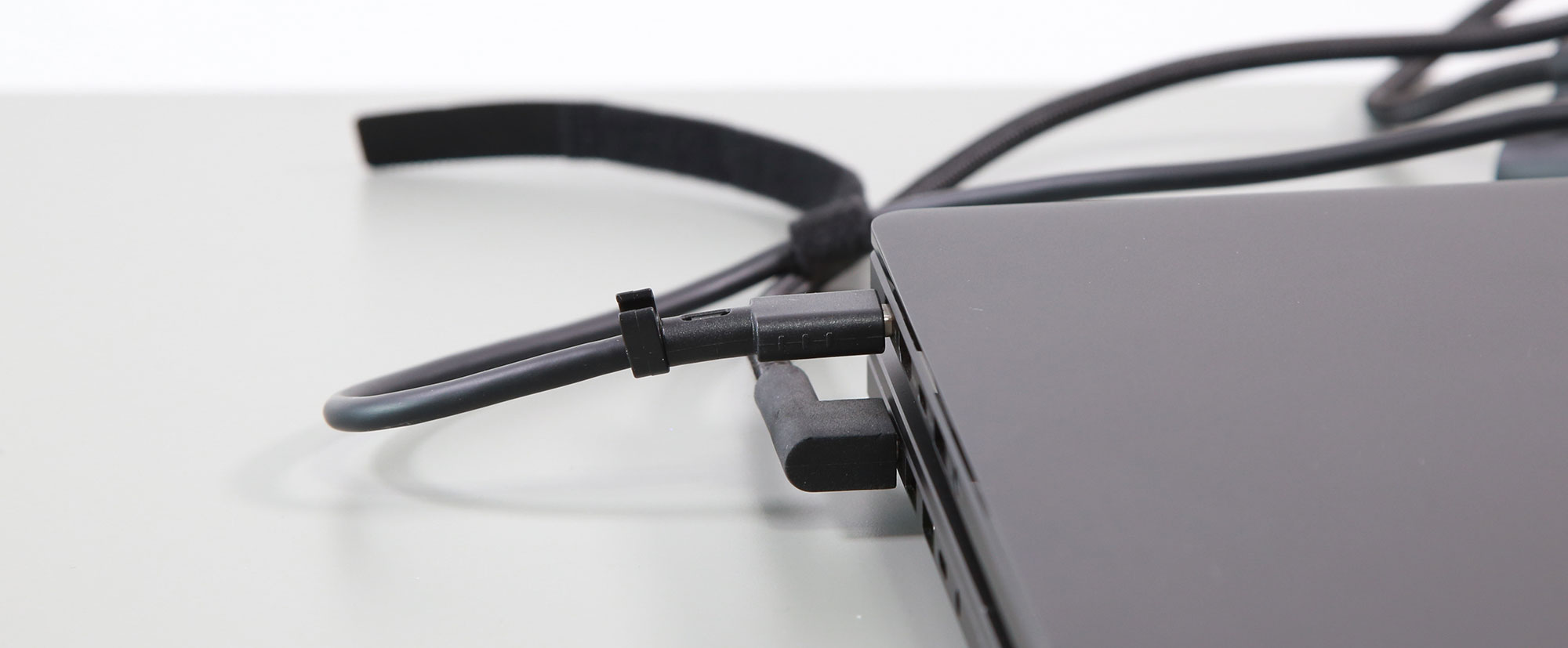





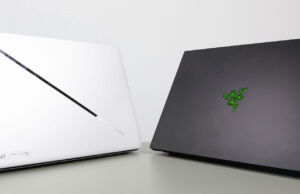


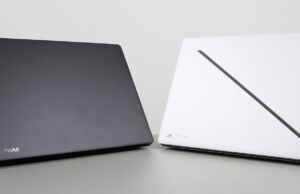
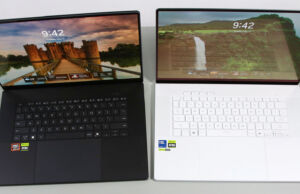
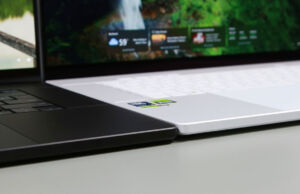

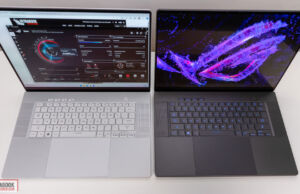

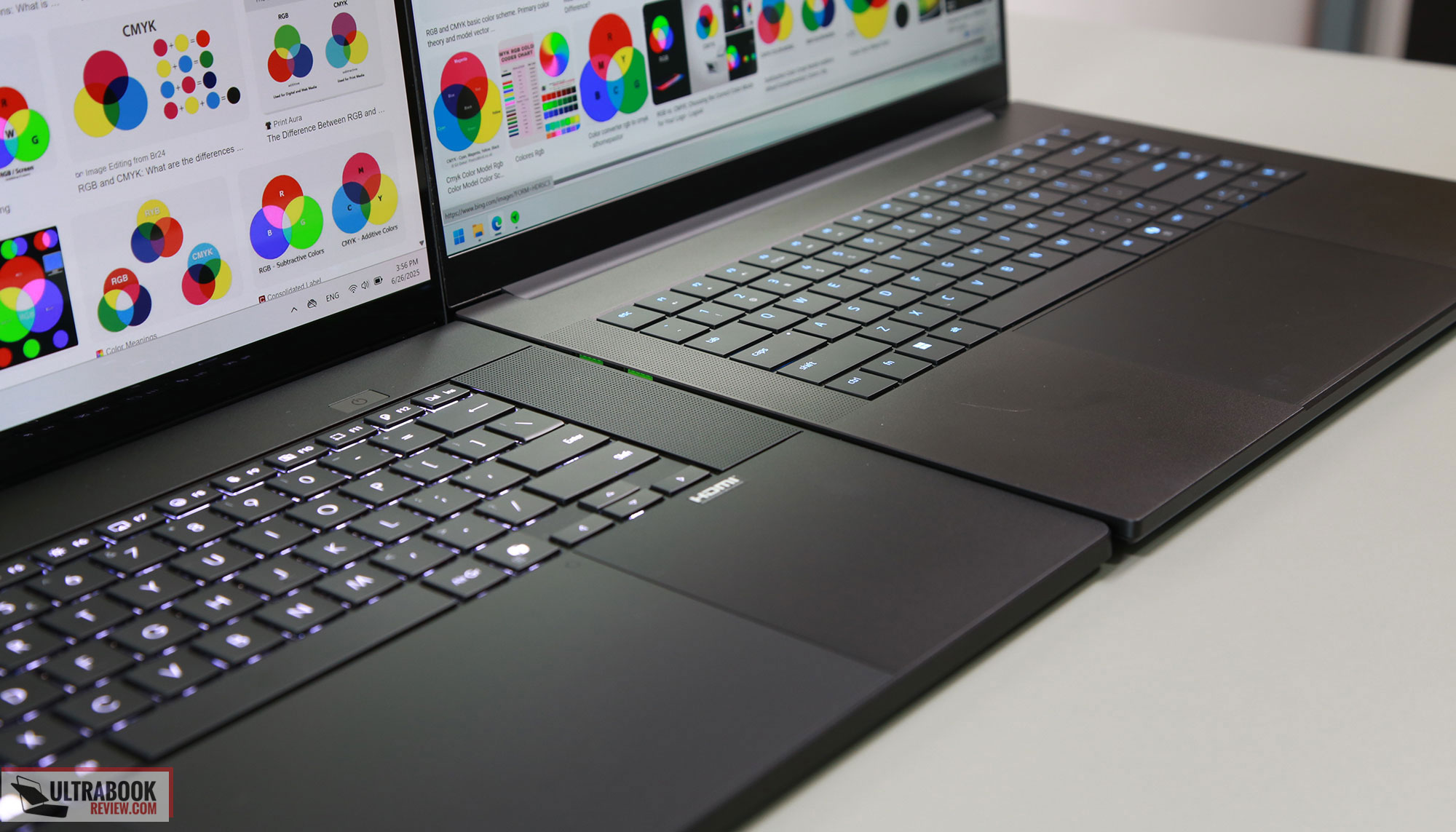
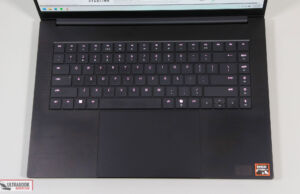
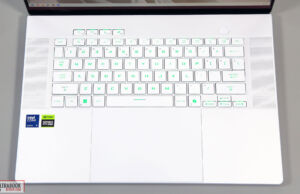

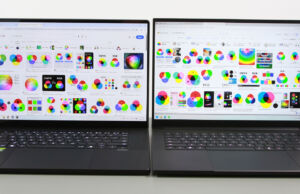
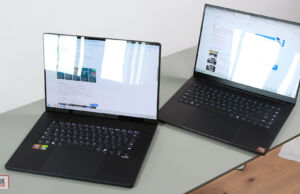

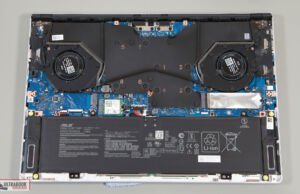
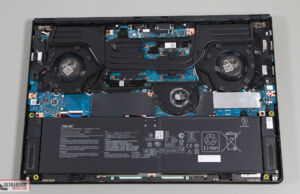





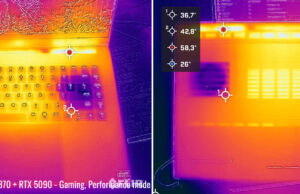

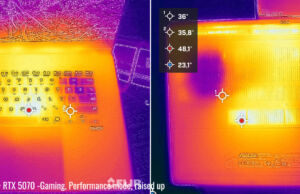








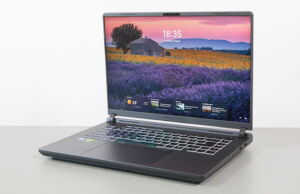
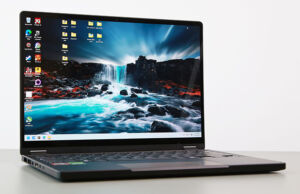


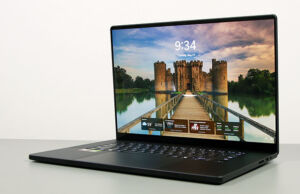
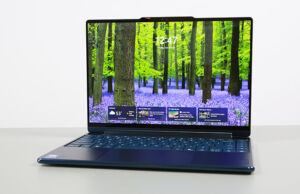


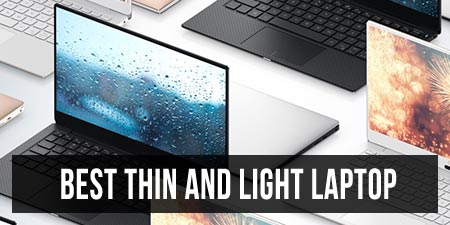
will blake
July 8, 2025 at 8:04 pm
I kinda like those "mini" buyer's guides. And 3 is the perfect number for it. Thinkbook vs Ideapad Slim vs Ideapad Pro, all 16", same CPU, say Ryzen 350, all 32Gb/1Tb, this what i'd like to read, if you'd asked me. Chat, tell me your trio.
Phil Yff
November 11, 2025 at 7:50 pm
Exceptional review. Speaking as a RazerBlade owner looking to upgrade, I can't help but agree that the latest refresh of the ProArt P16 is the better option for me. I want a machine I can game on while away from home but I don't need all the bells and whistles like MUX/GSync–I have a gaming desktop for the full gaming experience. Being able to watch media in 4K is a bigger draw than the faster refresh rate of the other two laptops.
My question is, in the US, Asus does not appear to be selling the RTX 5090 ProArt P16–either that or they're sold out. When can I expect it to be in stock?
Andrei Girbea
November 17, 2025 at 11:00 am
Best Buy have it listed as Coming soon. New Asus laptops are usually offered at Best Buy first